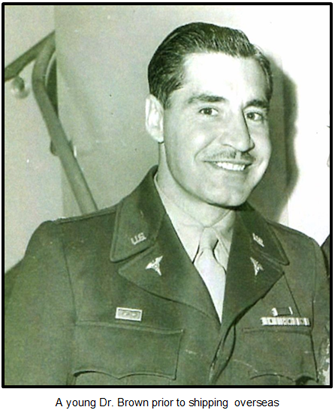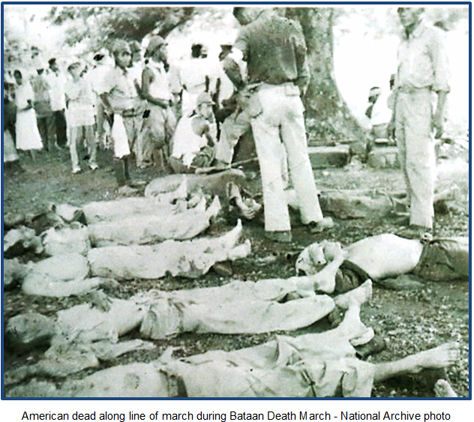Unbroken

Sorry about the hacking yesterday. Don’t click on links. We will see if I have to shut this account down. Change your passwords frequently. Take your castor oil. Eat your peas.
I was going to tell you about Doc’s battle with the implacable government today, but we lost another hero. It is purely coincidence that it is a health professional like Doc, in this case a modest dentist, but with the loss of heroes like Mike Rindskopf and Noel Gaylor in the last month, I thought it would be important to share the story of another Great American with you this morning.
Our pal Joe Maz sent the sad news along, and I dug into the story to put some context on it. Here is how it started:
14 August 2011. Major Albert Brown, USA-Ret., 105. Albert Brown, the oldest American survivor of the Bataan Death March, in which as many as 11,000 soldiers died at the hands of the Japanese in the Philippines in 1942, and perhaps the oldest American veteran of World War II, Nashville, Ill. He was 105.
Albert Neir Brown was born in North Platte, Neb., on Oct. 26, 1905, to Albert and Ida Fonda Brown. His father was a railroad engineer who was killed in a train wreck; his mother was an aunt of the actor Henry Fonda. He was the godson of Wild West folk hero “Buffalo Bill” Cody, who often let the boy sit on his lap and tug on the showman’s famous goatee.
Brown participated in the Reserve Officer’s Training Corps in high school and later graduated from Creighton University (Class of ’27) with a dentistry degree. A decade later, at 32, he was called into the Army, leaving a wife and children behind and eventually posted to the Philippine Islands.
Naval Intelligence Professionals Chairman Emeritus Mac Showers was graduating from Counter-Intelligence School at the time, and by alphabetical chance, the first half of his class was posted to Manila and captured at the start of the war.
Communications Station CAST, part of the Navy’s network of radio communications intelligence stations, operated from Corregidor Island in Manila Bay, which was the point from which General Douglas MacArthur departed for Australia. He left Lieutenant General (temporary) Jonathan Mayhew “Skinny” Wainwright IV to surrender to the Japanese.
Wainwright was the highest-ranking American POW of the war, and subsequently awarded the Congressional Medal of Honor.
Mr. Brown was the oldest living survivor of the six-day death march, and he may have been the oldest American World War II veteran. On April 10, 1942, then-Captain Brown was among the approximately 76,000 Americans and Filipinos forced to march 66 miles on the Bataan peninsula to Camp O’Donnell, where nearly four years of hell on earth ensued.
The Japanese had invaded the Philippines two weeks after the bombing of Pearl Harbor. American and Filipino forces were overmatched and retreated into the mountainous jungles of the Bataan Peninsula. After four months of intense fighting, Commanding General Douglas MacArthur fled and American and Filipino forces on Luzon surrendered.
With many already close to death the prisoners were force-marched to Camp O’Donnell, where the POWs were concentrated. The weather was sultry and humid. The Japanese did not provide anything like adequate food or water. Those who stopped on the line of march were killed without mercy. Japanese soldiers fractured the skulls of the POWs with rifle butts and cut off heads.

Prisoners who tried to help fallen comrades were bludgeoned or stabbed. Filipinos who attempted to throw fruit to the marchers were killed.
The nightmare was hardly over when the survivors arrived at the camp, or at the other camps in Japan to which many, including Captain Brown, were later taken.
In three years in captivity Captain Brown was regularly beaten; thrown down stairs, seriously injuring his back; and struck in the neck by a rifle butt, causing a fracture. Brown remained in a POW camps from early 1942 until mid-September 1945, living solely on rice and what protein- sometimes in the form of insects- the prisoner could scavenge.
A strapping six-foot-tall athlete, Brown had lettered in baseball, football, basketball and track in high school. In captivity, he lost more than 80 pounds, and when liberated weighted just over 90 pounds.
It is estimated that more than 40% of the Americans held in Japanese POW camps died, in contrast to a 1.2 percent fatality rate in German and Italian prisoner of war camps. His suffering at the hands of the Japanese Army echoes that of Louie Zamperini, the Air Corps bombardier and Olympic athlete chronicled by author Laura Hillenbrand in her recent best-seller “Unbroken
Promoted to major, Mr. Brown spent two years in an Army hospital after the war. He later moved to Los Angeles, where he bought property and rented apartments. His injuries made it impossible to return to dental work, and a doctor told him to enjoy the next few years because “he had been so decimated he would be dead by 50.”
But Brown persevered, attending college again and becoming a private pilot. As a real estate entrepreneur, he bought and rented out properties to the post-war era’s biggest Hollywood stars, including Joan Fontaine and Olivia de Havilland. His circle of friends included western actors John Wayne, Ward Bond and Roy Rogers.
He is survived by his son Graham and daughter, Peggy; 28 great-grandchildren; and 19 great-great-grandchildren. His wife Helen, with whom he spent 58 years, passed on in 1985.
Albert Brown’s story is told in the recently released Forsaken Heroes of the Pacific War: One Man’s True Story by Don Morrow and Kevin Moore (Bedford House). Profits will go to the Wounded Warriors Project and Fisher House.
Copyright 2011 Vic Socotra
www.vicsocotra.com
